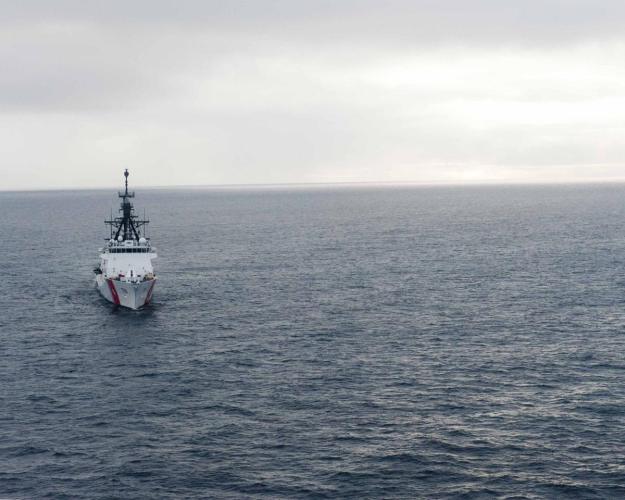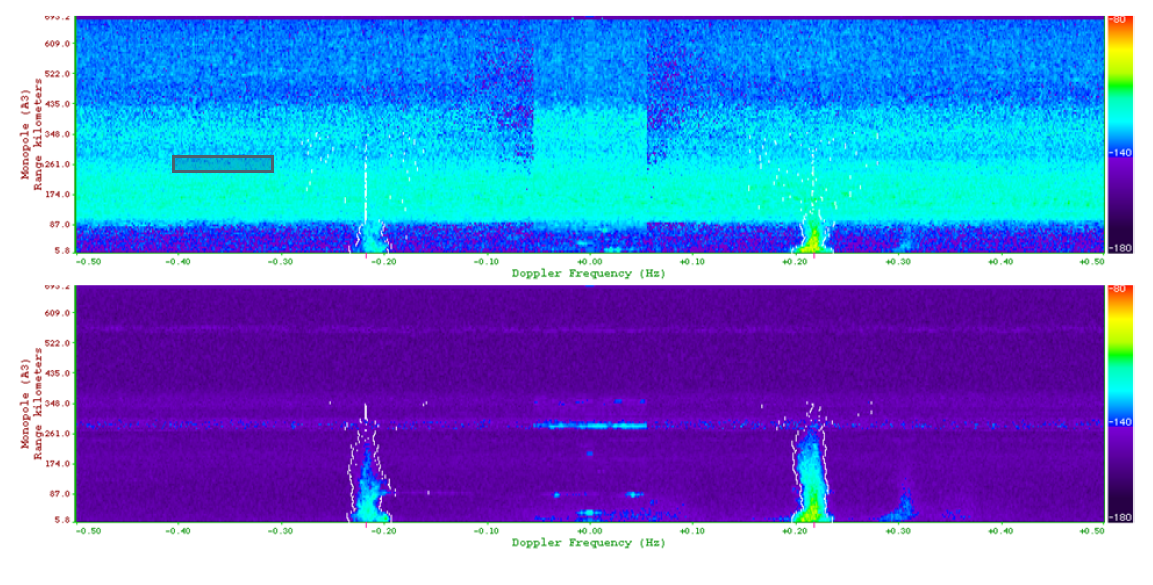Projects
Current Projects - Vessel Detection
|
Summary In addition to measuring surface currents, the echoes of High Frequency Radar (HFR) signals can also be used to detect vessels sailing within their mask of operation. Our HFR sites are being used to test real-time, concurrent, vessel detection in the Arctic as part of the U.S. Department of Homeland Security's (DHS) Maritime Domain Awareness plan. Our collaborators include CODAR Ocean Sensors, DHS's National Center for Islands, Maritime, and Extreme Environments Security (CIMES), and Rutgers University, which is a partner in DHS's Center for Secure and Resilient Maritime Commerce (now the Maritime Security Center). In 2012, our colleagues from Rutgers visisted and wrote a series of blog articles about what they experienced. |
 The Coast Guard Cutter Bertholf sails in the Arctic Ocean near Barrow, Alaska, Aug. 28, 2012. (U.S. Coast Guard Photo) |
|
Publications Roarty, Smith, Glenn, Barrick, Whelan, Page, Statscewich, Weingartner (2013) “Expanding the Maritime Domain Awareness Capabilities in the Arctic: High Frequency Radar Vessel Tracking", IEEE RadarCon13, Ottawa, Ontario, Canada, April 29 - May 3, 2013. Roarty, Smith, Glenn, Barrick, Whelan, Statscewich, Weingartner (2013) “Multi-Use HF Radar for Arctic Maritime Domain Awareness”, OCEANS'13 MTS/IEEE Conference, Bergen Norway, June 10-13, 2013. Statscewich, H., T. Weingartner, S. Danielson, G. Grunau, G. Egan, and J. Timm. 2011. A High-Latitude Modular Autonomous Power, Control, and Communication System for Application to High-Frequency Surface Current Mapping Radars. Marine Technology Society Journal, 45(3): 59 – 68. |
 Effects of a geomagnetic storm shown in a contour map of monopole spectra collected at the Point Barrow HFR site. |
